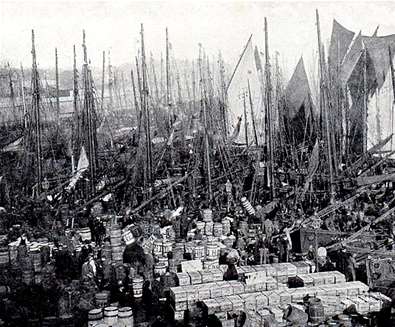Lowestoft holds the rather curious title of being the most Easterly point in the British Isles, something many people may consider an underrated title given the modest surroundings of Ness Point.
But, looking out from Ness Point; it seems an appropriate setting as you stare from the view offered across the stern and bleak North Sea. When there, one often thinks about the countless sailors who have worked and lived in the town that braved the famously harsh and unforgiving sea for a job that even today is considered the most dangerous occupation in the world.
Lowestoft’s commercial fishing story really started in earnest with the happening of two historical factors; in 1837 it became a port and in 1842 Sir Samuel Morton Peto built the railway between Lowestoft to both Ipswich and Norwich, meaning the fishing trade could take advantage of its unique infrastructure. Peto declared that the opening of the line “would enable fresh fish from Lowestoft to arrive in Manchester in time for the customary local High Tea”.
The above coupled with trade links to both Denmark and Holland brought prosperity which allowed the town to develop skills such as shipbuilding and engineering and become known as a leader in the maritime industry. This trade continued well into the 1960’s when Lowestoft still had an active and enviable mid-water trawling fleet.
However, these days, things are very different with under a dozen stalwart crews working boats regularly out of Lowestoft harbour.This legacy is not just a commercial history but also an important part of the cultural folk and creative heritage of the town.
Local music and arts organisation the Voice cLoud are delivering a project in Kessingland which aims to celebrate the rich folk history of songs that were sung by the seafaring community who worked off the Suffolk coast.
The project teaches songs that were sung within the fishing trade as well as other seafaring communities along the Suffolk coast, using musicians, historians and storytellers to explore the social and historical context of how songs were sung in their original setting as well as exploring where and why they were sung and examining local references and connections.
Director of the Voice cLoud Richard Simpson says: “In the days when the primary power source aboard a ship was muscle power, songs sung at sea served a practical purpose in that they were used to co-ordinate the work of many men or sailors.
Different types of shanties developed separate rhythms for the various chores at sea - for raising the anchor (which was done by marching around the capstan), hauling ropes as well as for other tasks.
Most songs involved a lead singer (popularly known as the Shantyman) and a choral response.

The words of the chorus usually coincided with a heave, or pull so they served an effective purpose but also offered mental diversion and an outlet for sailors to express their opinions in a manner which would not cause punishment.
We will explore how and why these songs were sung as well as the different reasons they were sung – some may have been to synchronize teamwork whilst on ship but we've also found songs which were sung by the families left at home offered as superstition to bring back sailors safely, naval songs, work songs by the communities left at home (for instance the herring girls from Scotland who moved around the UK to gut fish) and celebratory songs sung when back home among others.
Strictly speaking, shanties were sung on ocean going tall-ships (trading goods for example) compared to mid-water trawler fishing-men. However, most people think of songs sung by sailors as shanties so we retain that term.”
The Voice cLoud is a not for profit arts organisation that uses music and the singing voice for social impact and promotes the role of music, arts, creativity and imagination for life skills and within health and care settings for health and wellbeing.
The sessions are held at St Edmund’s Church, Church Walk, Kessingland, NR33 7SJ on alternate Tuesday evenings at 7.30pm and anybody is welcome to attend regardless of ability and age.
The sessions are free to attend and suitable for males and females as well as absolute beginners or experienced singers but places need to be booked by contacting the Voice cLoud by email contact@thevoicecloud.co.uk or on 07909 510976. Please note that children are welcome to attend if accompanied by an adult.